Understanding the Importance of a Perfect Cover Letter
In today’s competitive job market, a well-crafted cover letter is more than just a formality; it’s your first opportunity to make a strong impression and set yourself apart from other applicants. It serves as a crucial introduction, allowing you to showcase your personality, passion, and suitability for the role. A perfect cover letter provides a narrative that complements your resume, explaining why you are the ideal candidate. It bridges the gap between your skills and the job requirements, demonstrating your understanding of the company’s needs and how you can contribute to their success. Ignoring this important step can lead to missed opportunities, so taking the time to create a compelling cover letter is an investment in your job search success. Your goal is to make the hiring manager want to read your resume, and a well-written cover letter is the key.
The Essential Elements of a Cover Letter
Contact Information and Addressing the Recipient
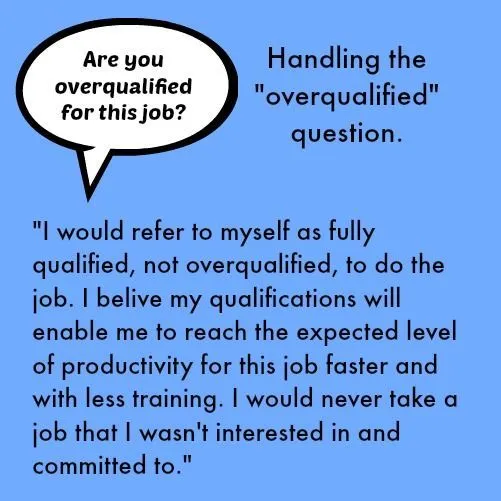
Start with your contact information at the top, including your name, phone number, email address, and optionally, your LinkedIn profile URL. Then, address the recipient properly. If you know the hiring manager’s name, use it; otherwise, a generic salutation like “Dear Hiring Manager” is acceptable. Researching the company and the specific role can often help you find the name of the person to address your letter to, which can make a more personal connection and show that you’ve done your homework. This small detail can make a significant difference in capturing their attention from the beginning. If you are applying for several positions in the same company, make sure to adjust the cover letter accordingly to the appropriate hiring manager.
Crafting a Compelling Opening Paragraph
Your opening paragraph is your chance to grab the reader’s attention. Start with a strong hook that immediately highlights your interest in the position and the company. Briefly mention how you learned about the opportunity and why it excites you. Demonstrate your understanding of the company’s mission or recent achievements to show that you’ve done your research. Avoid generic phrases and instead, focus on conveying your enthusiasm and making a clear statement about your suitability for the role. You want to make them eager to read the rest of your letter and learn more about what you bring to the table. Remember, this is your first impression, so make it count by setting the tone and setting the stage for the information to follow. A great start can make the difference between your application being noticed or overlooked.
Highlighting Relevant Skills and Experience
The body of your cover letter is where you provide more detail about your qualifications. Focus on highlighting the skills and experiences that are most relevant to the job description. Don’t just repeat your resume; instead, provide context and examples. Use the STAR method (Situation, Task, Action, Result) to illustrate how you’ve successfully tackled challenges and achieved results in previous roles. Show how your skills align with the company’s needs and demonstrate your value proposition. Make sure to back up your claims with specific examples, quantifying your achievements whenever possible. This allows the hiring manager to clearly understand your abilities and potential contributions to their organization. Show, don’t just tell, why you’re the right fit for the job.
Tailoring Your Cover Letter to the Job Description
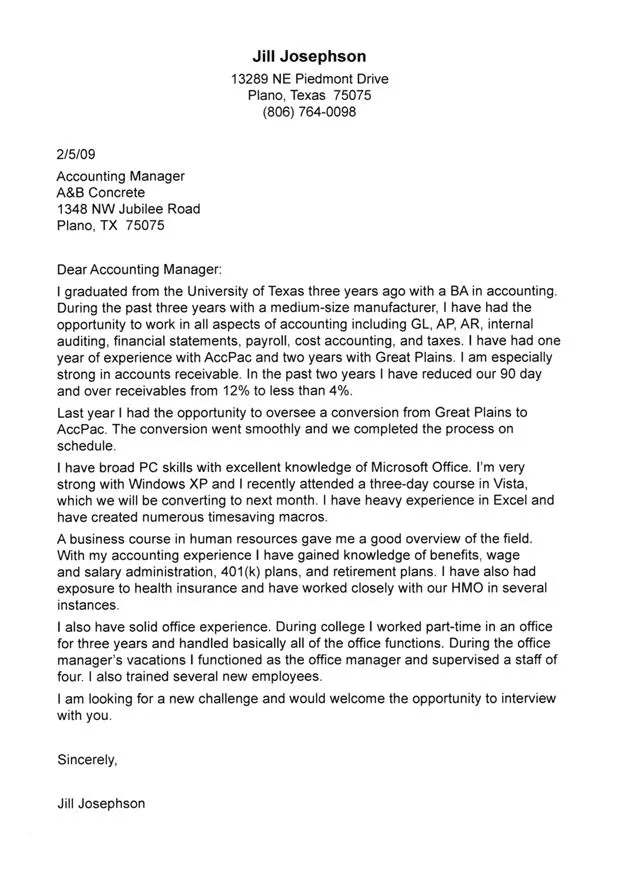
Every cover letter should be customized to the specific job you’re applying for. Carefully review the job description and identify the key requirements and keywords. Then, weave these keywords naturally into your cover letter to demonstrate your understanding of the role and its demands. This helps applicant tracking systems (ATS) recognize your application and also showcases to the hiring manager that you have taken the time to align your skills with their needs. Tailoring your letter also shows your genuine interest in the specific opportunity and helps you to stand out from generic applications. Ensure that your cover letter is a perfect match for the job, and you will be more likely to get a call for an interview.
Quantifying Your Achievements
Whenever possible, quantify your accomplishments to provide concrete evidence of your abilities. Use numbers and data to illustrate the impact you’ve made in previous roles. Instead of saying “Improved sales,” say “Increased sales by 15% in one quarter.” This approach makes your accomplishments more impactful and easier for the hiring manager to understand your value. Quantifying your achievements also demonstrates your ability to analyze results and your focus on achieving tangible outcomes. Show that you deliver results, providing the hiring manager with confidence in your capabilities. This detail provides more credibility than making generic statements.
Demonstrating Enthusiasm and Fit
In your cover letter, express your genuine enthusiasm for the role and the company. Show that you’ve researched the company, understand its mission, and are excited about the opportunity to contribute. Explain why you’re a good fit for the company culture and how your values align with theirs. This goes beyond merely listing your skills and experience; it showcases your personality and passion, making you more memorable. Demonstrating enthusiasm shows the hiring manager that you’re not just looking for a job but are genuinely invested in the success of their organization. Make them see you as an enthusiastic team member eager to contribute to the organization’s goals.
Writing a Strong Closing Paragraph
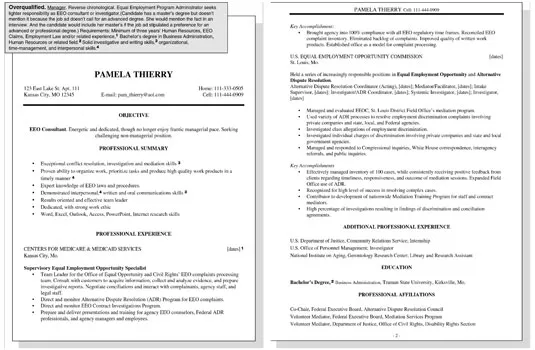
Your closing paragraph should reiterate your interest in the position and express your enthusiasm for an interview. Thank the hiring manager for their time and consideration. Provide a call to action, such as stating that you look forward to discussing your qualifications further. Ensure you provide your contact information one more time. Keep the tone professional and positive. A strong closing paragraph leaves a lasting impression and reinforces your desire for the job. Ending your cover letter with confidence and enthusiasm helps ensure your application stays top of mind.
Formatting and Proofreading Your Cover Letter
Formatting and proofreading are critical steps that can significantly impact the impression you make. Use a clean, professional font such as Arial, Calibri, or Times New Roman. Ensure your letter is easy to read with appropriate spacing, and use bullet points or concise paragraphs. Proofread your cover letter meticulously for any grammatical errors or typos. Errors can undermine your credibility and suggest a lack of attention to detail. Use grammar and spell-checking tools, but also consider having a friend or family member review your letter for a fresh perspective. Attention to detail in this area makes you appear professional and shows respect for the hiring manager’s time.
Avoiding Common Cover Letter Mistakes
Generic Cover Letters

One of the most common mistakes is sending a generic cover letter that is not tailored to the specific job. Such letters lack personalization, making it clear you haven’t taken the time to understand the role or the company. Generic letters often fail to address the specific requirements of the job, which doesn’t make a strong impression. Always customize your cover letter to reflect your understanding of the position and the company’s needs. Show that you’ve done your research and are truly interested in the opportunity. This demonstrates your commitment and increases your chances of being selected for an interview. Tailoring shows that you care about the specific opportunity.
Focusing Solely on Your Needs
Avoid the mistake of making your cover letter all about your needs and desires. While it’s important to state your interest in the job, center your letter on how you can benefit the company. Focus on what you can bring to the role, your skills, experiences, and achievements that align with the company’s needs. Show that you understand the company’s challenges and how you can help solve them. Demonstrating your value and how you can contribute is essential, rather than only focusing on what you hope to gain from the position. Shift the focus to the company and how your skills can help the organization succeed.
Ignoring the Job Description
Failing to address the requirements outlined in the job description is a critical error. The job description acts as a guide to what the employer is looking for in a candidate. If your cover letter doesn’t directly address these requirements, you’re essentially signaling that you haven’t understood the role. Carefully review the job description and incorporate the keywords and qualifications that are mentioned. Show the hiring manager how your skills and experience align with their needs and explain how you can meet the expectations of the position. This helps the hiring manager quickly see that you are a qualified candidate, increasing your chances of an interview.
Typos and Grammatical Errors
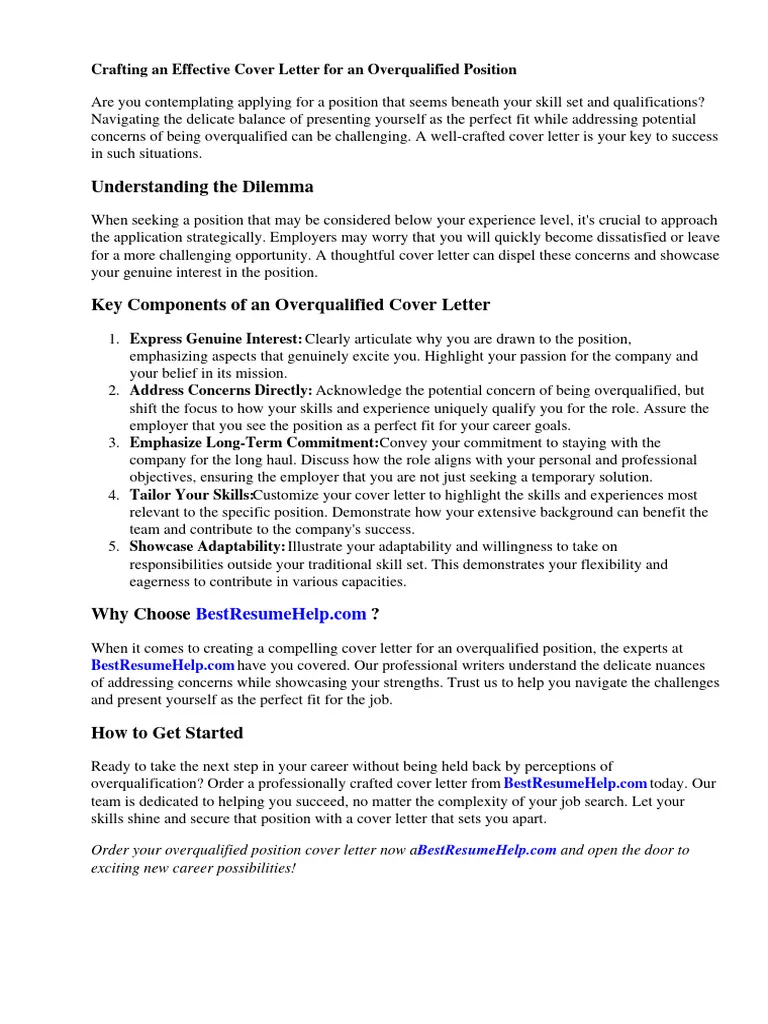
Typos and grammatical errors are a major turnoff. They suggest a lack of attention to detail and can undermine your credibility. Always proofread your cover letter meticulously before submitting it. Use grammar and spell-checking tools, but also have someone else review your letter for any errors that you might have missed. Pay attention to every detail, as even a small mistake can create a negative impression. A clean and error-free cover letter demonstrates professionalism and respect for the hiring manager’s time.
Being Too Vague or Wordy
Avoid being too vague or overly wordy in your cover letter. Keep your language concise and focused on what you can offer the company. Avoid jargon and unnecessary details that can distract the hiring manager. Be clear and direct in highlighting your skills and experiences. Use clear and concise sentences that make your message easy to understand. A well-written cover letter should be easy to read and quickly convey your qualifications and enthusiasm for the job. Get right to the point in the first paragraph and stay there, providing the hiring manager all the relevant information in an easy way.
Formatting & Design Tips to Make Your Cover Letter Stand Out
Choosing the Right Font and Font Size
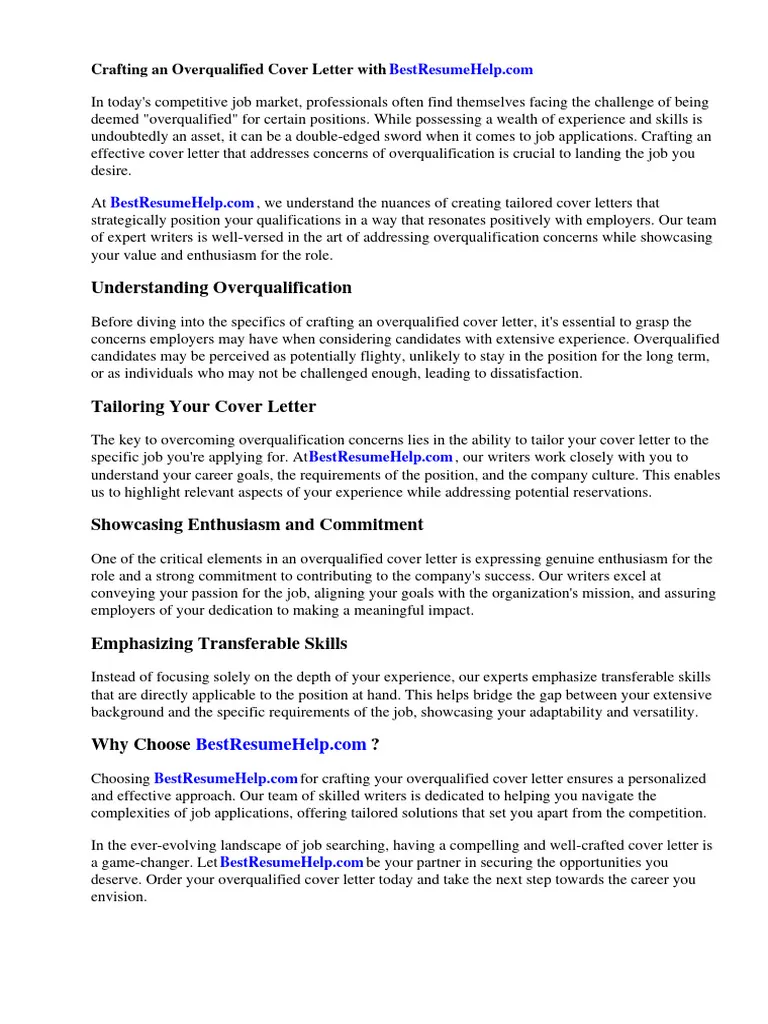
The choice of font and font size can significantly influence the readability and professionalism of your cover letter. Opt for a classic, easy-to-read font such as Arial, Calibri, or Times New Roman. Use a font size between 11 and 12 points to ensure readability. Avoid using overly stylized or decorative fonts that can make your letter harder to read. Maintain a consistent font and font size throughout your letter. The right font and size can create a polished look that will make your cover letter visually appealing and easy for the hiring manager to read. This will help make your letter stand out for all the right reasons.
Using White Space Effectively
White space, or the blank areas around your text, is just as important as the words themselves. Use white space to break up your text and make your letter more visually appealing. Use ample margins (1 inch is generally recommended) and space between paragraphs. Avoid cramming too much text onto one page, as it can make your cover letter look cluttered and overwhelming. Proper use of white space enhances readability and makes your cover letter more inviting to the reader. White space also helps highlight key information, making it easy for the hiring manager to scan your letter for relevant details.
Creating a Professional Layout
Create a professional and organized layout for your cover letter. Use clear headings to separate different sections of your letter, such as your contact information, the opening paragraph, and the body paragraphs. Keep your letter concise and focus on relevant information only. A well-structured cover letter makes it easy for the hiring manager to quickly find and understand the key points. Use bullet points or numbered lists to highlight important information or quantify your achievements. A well-designed layout shows that you pay attention to detail and value the hiring manager’s time.
Leveraging Keywords for Applicant Tracking Systems (ATS)
Many companies use Applicant Tracking Systems (ATS) to screen applications. To ensure your cover letter gets noticed, integrate relevant keywords from the job description into your letter. Identify the key skills, experiences, and qualifications the employer is looking for and weave them naturally into your text. Avoid keyword stuffing, but make sure to use the keywords in a way that accurately reflects your skills and experiences. By leveraging relevant keywords, you increase the chances of your application being picked up by the ATS, and makes sure it gets to the hands of the hiring manager.
Using Strong Action Verbs
Use strong action verbs to describe your accomplishments and skills. Action verbs make your cover letter more dynamic and engaging. Start each bullet point with a powerful verb to clearly show what you’ve achieved. Avoid generic verbs and choose those that accurately reflect your achievements. Use action verbs like “managed,” “developed,” “implemented,” “achieved,” “increased,” etc., to make your cover letter more impactful. This will make your descriptions more vivid and show that you have skills that would benefit the company.
Cover Letter Examples and Templates
Reviewing cover letter examples and templates can provide valuable guidance and inspiration for writing your own. Many online resources offer various examples and templates tailored to different industries and job types. Use these resources to understand different formats and styles, and get ideas for phrasing and content. Adapt the examples to your specific situation, ensuring that your cover letter reflects your unique skills and experiences. Templates can serve as a framework, while ensuring your letter is original. Remember, you must tailor your letter to the specific job requirements and company culture. This approach can save time and help you create a compelling cover letter that impresses hiring managers.
Resources for Further Learning
Numerous resources are available to help you further refine your cover letter writing skills. Online career websites, books, and articles provide extensive guidance and tips. Career counselors can offer personalized advice and feedback on your cover letter. Consider attending workshops or webinars on cover letter writing to learn from experts and network with other job seekers. Use these resources to stay informed about current best practices and techniques. Continuing to learn and improve your skills can significantly increase your chances of writing a perfect cover letter that gets you noticed.
